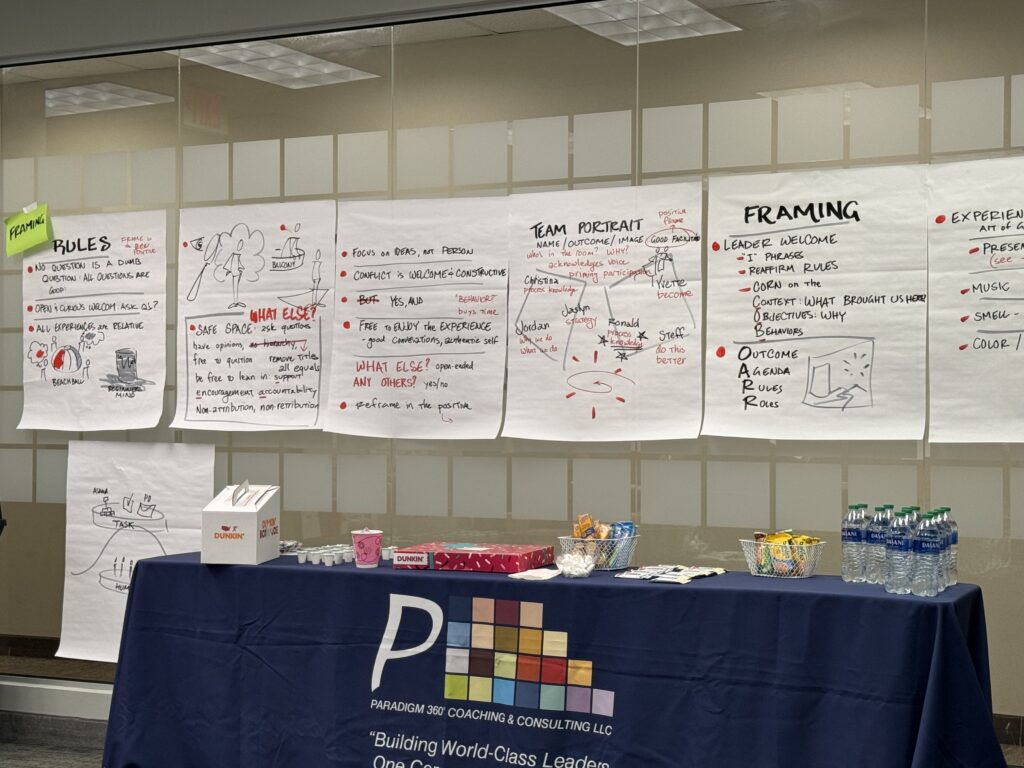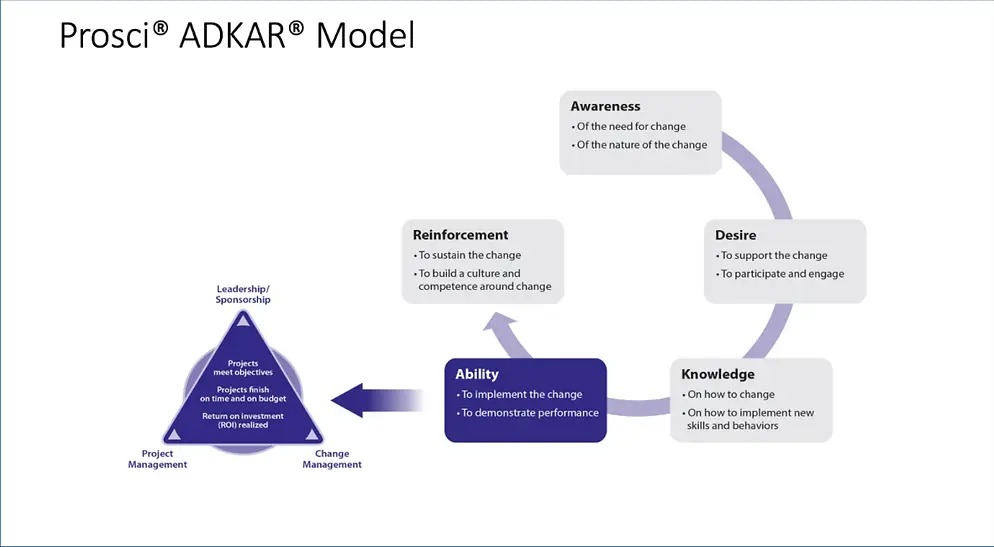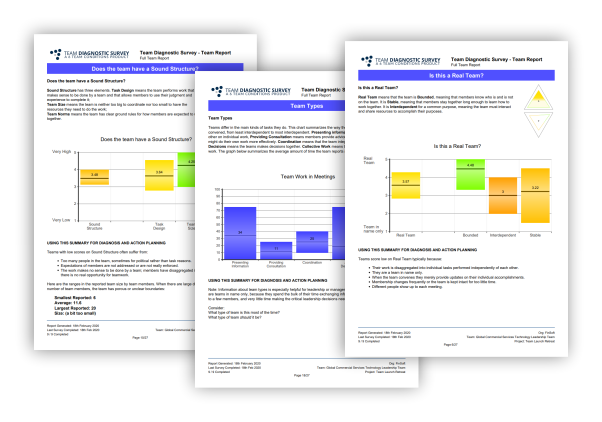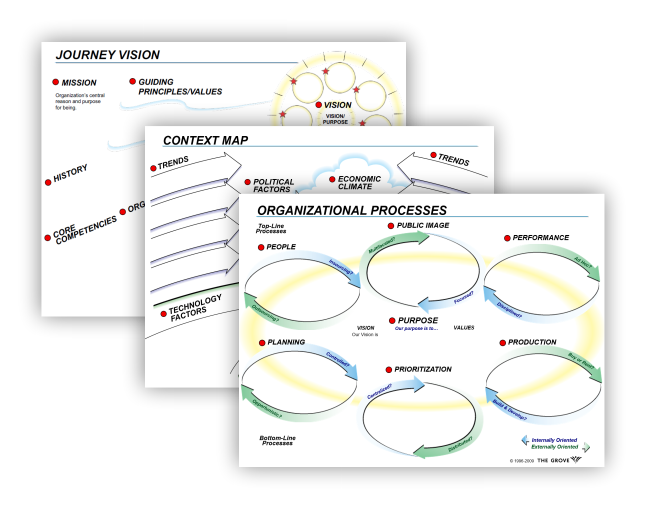Strategic Facilitation and Change Management
It Starts With A Plan
The Paradigm 360º team of master facilitators skillfully guides organizations through transformative processes to achieve their long-term goals.


6 Team Conditions
Program Features
- Compelling Direction
- Strong Structure
- Supportive Context
- Shared Mindset
- Competent Team Members
- Team Coaching
Outlines six critical conditions for understanding and fostering successful teamwork:
Delivery and Key Topics
Key Topics Covered
By establishing and nurturing these six team conditions, organizations can create an environment where teams thrive, collaborate effectively, and achieve their goals with greater efficiency and impact.
Compelling Direction: High-performing teams have a clear and compelling purpose or goal that guides their efforts. This direction provides a shared understanding of what the team is working to achieve and why it matters. A compelling direction inspires team members to align their efforts and stay focused on the team’s objectives.
Strong Structure: Effective teams have a clear structure that defines roles, responsibilities, and processes. This structure ensures that team members understand their individual contributions and how they fit into the larger team context. It also provides clarity around decision-making, communication channels, and accountability, facilitating efficient teamwork and collaboration.
Supportive Context: High-performing teams operate within a supportive organizational context that provides resources, information, and opportunities for learning and development. This context enables team members to access the resources they need to perform their roles effectively and to overcome challenges as they arise. Supportive contexts also foster a culture of trust, respect, and psychological safety, where team members feel comfortable taking risks, sharing ideas, and expressing themselves openly.
Shared Mindset: Effective teams share a common mindset or set of values that guide their behavior and interactions. This shared mindset includes beliefs, norms, and expectations that shape how team members work together and approach their tasks. It fosters cohesion, mutual respect, and a sense of collective identity among team members, promoting collaboration and alignment towards common goals.
Competent Team Members: High-performing teams consist of members who possess the skills, knowledge, and abilities necessary to fulfill their roles effectively. Competent team members bring diverse perspectives, expertise, and experiences to the team, enriching discussions and problem-solving processes. They also demonstrate a willingness to learn and adapt, continuously improving their capabilities and contributing to the team’s success.
Team Coaching: Effective teams receive coaching and support from a qualified external facilitator or internal leader who helps them develop and maintain their effectiveness over time. Team coaching involves providing feedback, facilitating discussions, and offering guidance to help teams identify areas for improvement and implement strategies to enhance their performance. It also helps build the team’s capacity for self-reflection, learning, and adaptation, enabling them to navigate challenges and capitalize on opportunities more effectively.
Strategic Visioning
Learn from your peers in small group and partner work while exploring case studies, role plays and simulations. Work on your own real-world challenges and receive field-tested best practices that you can use right away. We offer a range of interactive courses for groups and teams that can be tailored to your organization’s specific needs.
Program Features
Visual facilitation creates a high-engagement process that supports alignment around:
- Desired future
- Strategic action plans
- Organizational communication
Delivery and Key Topics
Key Topics Covered
It aims to teach participants how to lead a strategic visioning process, assess their current situation, co-create a compelling vision, develop action plans, and ensure that stakeholder voices are included.
Moreover, the Strategic Visioning process addresses common planning challenges, such as time efficiency, overcoming resistance to planning, and aligning cross-functional teams. It facilitates a structured yet creative planning process that can adapt to an organization’s specific circumstances, making strategic planning more engaging and effective. The process also includes provisions for incorporating inputs from cynics and skeptics, ensuring that a wide range of perspectives are considered to clarify priorities and translate strategies into actionable plans
Team Performance Model
The Team Performance Model emphasizes the dynamic nature of team development, highlighting that teams may cycle through different stages as they encounter new challenges or undergo changes within the team.
Program Features
The arc-shaped layout of the Model elements represents the constant movement of developing teams from freedom to constraint and back toward freedom, as constraints are mastered over time.
Delivery and Key Topics
Key Topics Covered
This course explores the following subjects in depth:
1. Orientation (Why?)
- Forming Stage: Team members are introduced. They learn about the project and their responsibilities. This stage is marked by dependence on leadership for guidance and direction. The focus is on understanding the team’s purpose and the individual roles within the team.
2. Trust Building (Who?)
- Storming Stage: As team members start working together, they test the boundaries of leadership and each other. Trust building is crucial at this stage to overcome conflicts and establish strong interpersonal relationships, ensuring open communication and respect among team members.
3. Goal Clarification (What?)
- Norming Stage: Teams define their goals and establish shared visions and values. This stage emphasizes aligning team members towards common objectives and clarifying individual contributions to the team’s success.
4. Commitment (How?)
- Teams decide on their strategies, processes, and resources required to achieve their goals. Commitment to the team’s strategy and to each other is critical to move forward effectively.
5. Implementation (Who Does What, When, Where?)
- Performing Stage: With clear goals, strategies, and commitments, the team is now ready to execute the plan. Roles and responsibilities are clearly defined, and the team works collaboratively towards achieving the set objectives.
6. High Performance (Wow!)
- A high-performing team operates with a high degree of autonomy, engagement, and efficiency. Team members are deeply committed to the team’s success and can adapt quickly to changes. Innovation, collaboration, and productivity are at their peak.
7. Renewal (Why Continue?)
- Adjourning/Transforming Stage: Teams reflect on their achievements and challenges. They evaluate the need for continued efforts towards current goals or the setting of new objectives. This stage is also about recognizing accomplishments and learning from the team process.

Change Management
Change is a constant and we are committed to coming alongside organizations to help facilitate the change process.
No matter the scope of the change, we guide you through the process of moving from your current state to your desired future state with excellence.





